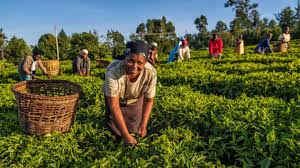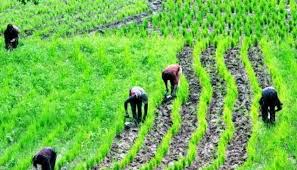The food system encompasses food, nutrition, health, community economic development, and agriculture. It includes all processes involved in keeping people fed.
These processes include growing, harvesting, processing, packaging, transporting, marketing, consuming, and disposing of food and food packages. It also includes the inputs needed and outputs generated at each step.
The food system organisation, however, thrives in a favourable social, political, economic, and natural environment. Food is required for the sustenance of life. Good food consumption pattern is linked with healthy living.
The purpose of eating food is to maintain health, prevent diseases, and enjoy productive living. Quite a number of people abuse this purpose and consume food only for survival.
This is because most people lack the basic nutrition knowledge regarding the required food quantity and quality, food selection and its combination, and cooking skills to make consumption of nutritious food a lifestyle.
Inadequate nutrition knowledge coupled with inadequate access to food and supply thus results in food insecurity.
Read Also: 12 Medicinal Health Benefits of Oats (Avena Sativa)
Key Principles of Community Food System in Agriculture

The principles of community food system include the following:
1. Food security: Local community food security addresses food access within country context, especially for low-income households, and also aims to develop the rural food base.
2. Proximity: It tries to bridge the gaps between the various components of the food system. Therefore, the distance between various components is generally shorter than those in urban, national, or global food systems.
3. Self-reliance: It aims at increasing the degree to which the community meets its food needs while selling excess to other communities.
4. Sustainability: This focuses on the ability of the community to meet their food needs as well as that of future generations. The process ensures environmental protection, profitability, ethical treatment of food workers, and community development.
Goals of Community Food System in Agricultural Development
The overall goal of building a community food system is to meet the food needs of people living in a particular locality or rural area. The specific goals include:
1. Provision of dietary change that complements the seasonal availability of food produced and processed by the local food and agriculture system.
2. Improved access for all community members to adequate, affordable, nutritious diet and use.
3. A stable, increasing base of family farms that use integrated production practices to enhance environmental quality.
4. A creation of marketing channels and processing facilities that directly links farmers and consumers, thereby conserving resources needed for food transportation.
Read Also: Blackleg (cruciferous plants): Description, Damages Caused, Control and Preventive Measures
Strategies for Building Community Food System in Agriculture

The major strategies for community food system are as follows:
1. Community Supported Agriculture (CSA)
Under this strategy, farmers and consumers come together in a mutual relationship that fosters opportunities for consumers to buy shares in the farming business, thereby creating economic support for farmers to expand production and make food available. Activities embarked upon include:
i. Granting more access to low-income holders through sliding scale fee, friendly duration process, working shares, and payment plans.
ii. Empowerment programmes to educate community members on sustainable agriculture, good nutrition, and proper food handling.
2. Farmers Markets
Through farmers markets, agricultural produce and products are purchased. This would improve farmers’ income while fostering availability and varieties of food. This strategy is strengthened through:
i. Guidelines to ensure only locally produced products are sold in the market.
ii. Provision of market information and avenues which enable farmers and consumers to share ideas and concerns about market operation.
3. Community Economic Development
Community economic development initiatives include projects that give people the opportunity to start or enhance food-related small businesses and cottage industries, as well as efforts to bring supermarkets, local fast food enterprises, etc. This strategy focuses on:
i. Initiatives that target job creation for people in low-income communities.
ii. Businesses that use locally, regionally, and sustainably grown food and market products.
Role of Rural Entrepreneurship in Agricultural Food System
Rural entrepreneurship is defined as the adoption of new forms of business organisation, new technologies, and producing goods not previously available at a location.
Rural entrepreneurship is about creating rural wealth, and a high level of entrepreneurship capacity therefore tends to facilitate growth of the economy.
Community food system initiatives being created in rural areas serve as measures to enhance maximum contribution of the rural sector to economic growth while improving rural productivity, income generation, employment opportunity, and standard of living.
Food Security and Insecurity in Relation to Agricultural Education
Food security and food insecurity are concepts that require better understanding by students in higher institutions of learning. Both concepts have a wider scope that translate to community food system and rural entrepreneurship.
Students would be able to have in-depth knowledge of rural entrepreneurship and its contribution to rural economic growth by improving income generation, rural productivity, and employment opportunity.
Do you have any questions, suggestions, or contributions? If so, please feel free to use the comment box below to share your thoughts. We also encourage you to kindly share this information with others who might benefit from it. Since we can’t reach everyone at once, we truly appreciate your help in spreading the word. Thank you so much for your support and for sharing!

